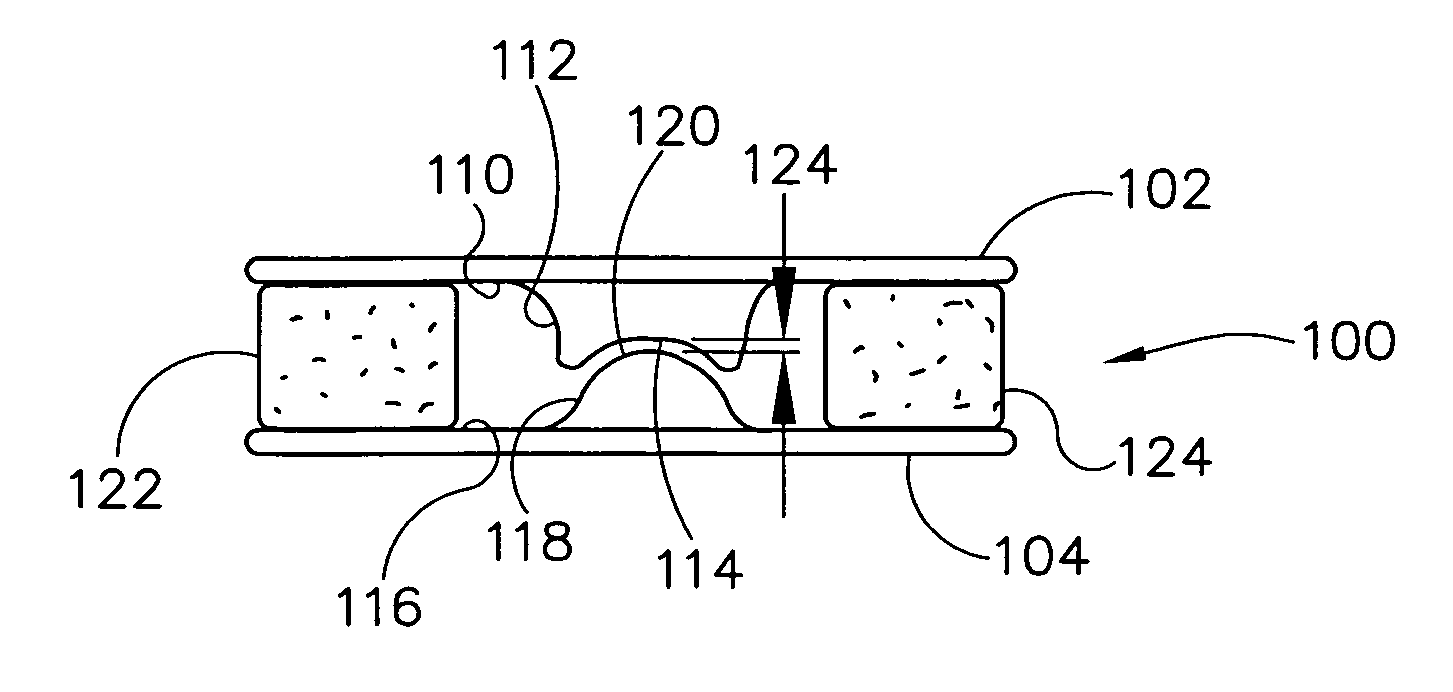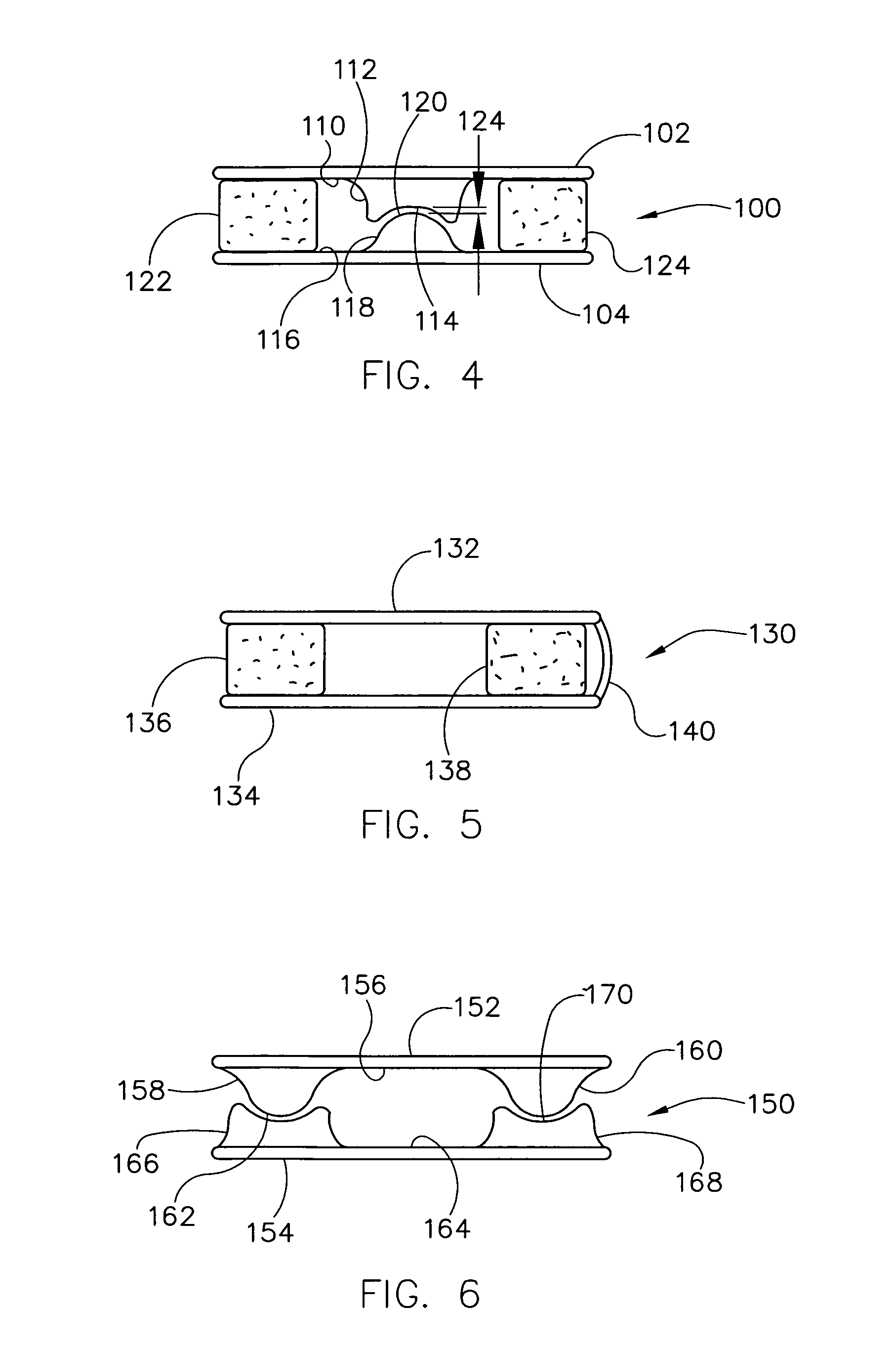Intervertebral implant
- Summary
- Abstract
- Description
- Claims
- Application Information
AI Technical Summary
Benefits of technology
Problems solved by technology
Method used
Image
Examples
first embodiment
[0044] Referring to FIG. 4, an intervertebral implant of a first embodiment is designated in its entirety by the reference number 100. The implant 100 includes an upper plate or mount 102 and a lower plate or mount 104. The upper plate 102 includes a lower face 110 and a protrusion 112 having a concave lower end 114 extending downward from the lower face. The lower plate 104 includes an upper face 116 and a protrusion 118 having a convex upper end 120 extending upward from the upper face. The concave end 114 of the upper plate protrusion 112 receives the convex end 120 of the lower plate protrusion 118. The concave end 114 and the convex end 120 have complementary shapes (e.g., similarly sized spherical shapes) allowing the upper and lower plates 102, 104 to pivot with respect to each other. Although the concave end 114 and the convex end 120 may have other radii without departing from the scope of the present invention, in one embodiment the concave end has a radius of between abou...
tenth embodiment
[0056]FIGS. 13-15 illustrate an implant of a tenth embodiment, generally designated by 270. The implant 270 includes two upper plates 272, 274 overlapped at one end and arranged in a V-shape as shown. The implant 270 also includes two lower plates 276, 278 overlapped at one end and also arranged in a V-shape as shown. Although the upper and lower plates 272, 274, 276, 278 may be overlapped at other ends without departing from the scope of the present invention, in one embodiment, the plates are overlapped at their forward ends. A forward compressible element 280 is positioned between the upper and lower plates 272, 280. Rearward compressible elements 282, 284 are positioned between respective rearward ends of the upper and lower plates as shown. The plates may be fastened together using conventional means such as interlocking parts, riveting or brazing. Although the upper plates 272, 274 and lower plates 276, 278 may be arranged to form other included angles, in one embodiment, both...
PUM
 Login to View More
Login to View More Abstract
Description
Claims
Application Information
 Login to View More
Login to View More - R&D
- Intellectual Property
- Life Sciences
- Materials
- Tech Scout
- Unparalleled Data Quality
- Higher Quality Content
- 60% Fewer Hallucinations
Browse by: Latest US Patents, China's latest patents, Technical Efficacy Thesaurus, Application Domain, Technology Topic, Popular Technical Reports.
© 2025 PatSnap. All rights reserved.Legal|Privacy policy|Modern Slavery Act Transparency Statement|Sitemap|About US| Contact US: help@patsnap.com



